The world of espionage thrillers is vast, with many talented authors leaving their mark. Among these, the “Gray Man” series by Mark Greaney has carved a niche for itself, providing readers with edge-of-the-seat action and intricate plots. This series revolves around the protagonist, Court Gentry, an ex-CIA operative, and his thrilling adventures.
If you’re new to this world or just trying to ensure you haven’t missed a book, read on to understand more about the author and get the series listed in order.
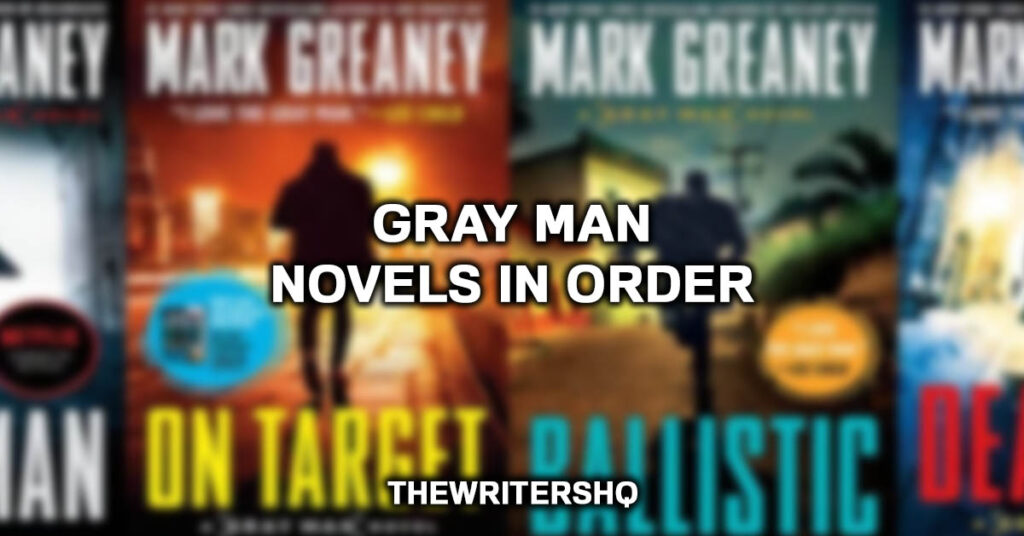
Who is Mark Greaney?

Mark Greaney is an acclaimed American novelist, best known for his espionage thrillers. He first made a splash in the literary world with “The Gray Man,” which introduced readers to the character Court Gentry. Greaney’s compelling storytelling, combined with meticulous research, has earned him a spot among the elites in the thriller genre.
Apart from his own series, Greaney has co-authored several novels in the Jack Ryan series with Tom Clancy and continued the series after Clancy’s demise. His books aren’t just loved by readers, but they also receive praise from fellow authors and critics alike.
Gray-Man Books in Order:
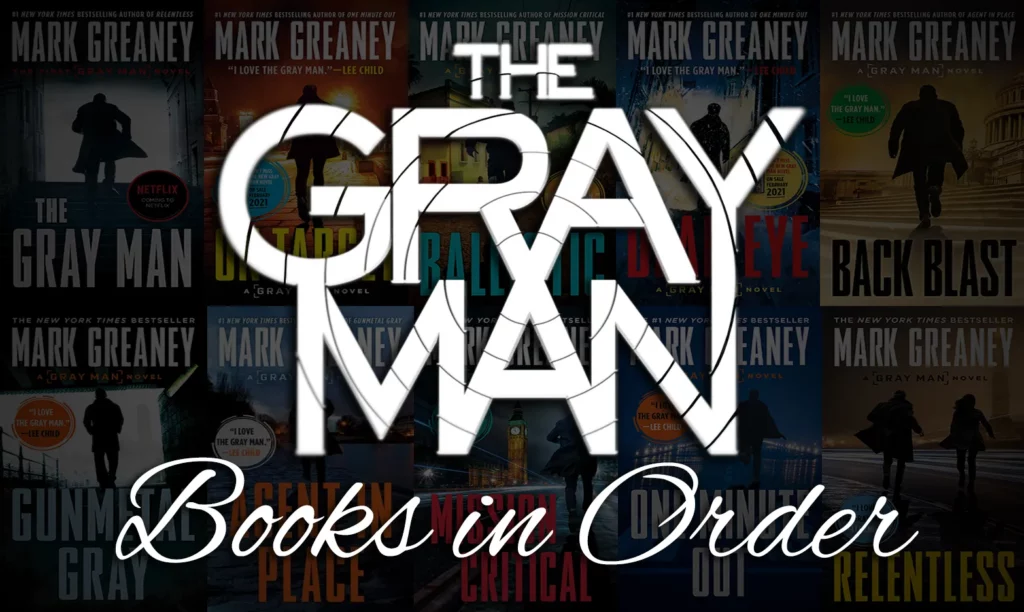
- The Gray Man (2009)
- On Target (2010)
- Ballistic (2011)
- Dead Eye (2013)
- Back Blast (2016)
- Gunmetal Gray (2017)
- Agent in Place (2018)
- Mission Critical (2019)
- One Minute Out (2020)
- Relentless (2021)
- Sierra Six (2022)
- Burner (2023)
If you’re a fan of high-octane thrillers, Mark Greaney’s Gray Man series is a must-read. Dive into the world of Court Gentry and experience espionage like never before.
The Gray Man Netflix Movie
The Gray Man Netflix Movie: Netflix has announced an adaptation of Mark Greaney’s “The Gray Man” into a feature film. This adaptation is particularly noteworthy given its high-profile nature:
- Directors: The Russo Brothers, Anthony, and Joe Russo, known for their work on several Marvel movies, including “Avengers: Infinity War” and “Avengers: Endgame”, are directing the movie.
- Cast: The movie boasts a star-studded cast with Ryan Gosling playing the lead role of Court Gentry. Chris Evans, known for his portrayal of Captain America, is also a key cast member. The presence of these two actors, among others, indicates the high production value and the anticipated nature of the film.
- Plot: While movies often take creative liberties, it’s expected that the plot will closely follow the narrative of the first book, where Court Gentry is hunted across the globe by his former CIA colleagues.
Expert Tip: The Gray Man movie by Netflix is anticipated to be one of the most significant action films, especially given the success of the book series and the involvement of major Hollywood talents. Fans of the series and newcomers alike are eagerly awaiting its release to see Court Gentry’s world come alive on the screen.
Summary of the books
1. The Gray Man (2009)
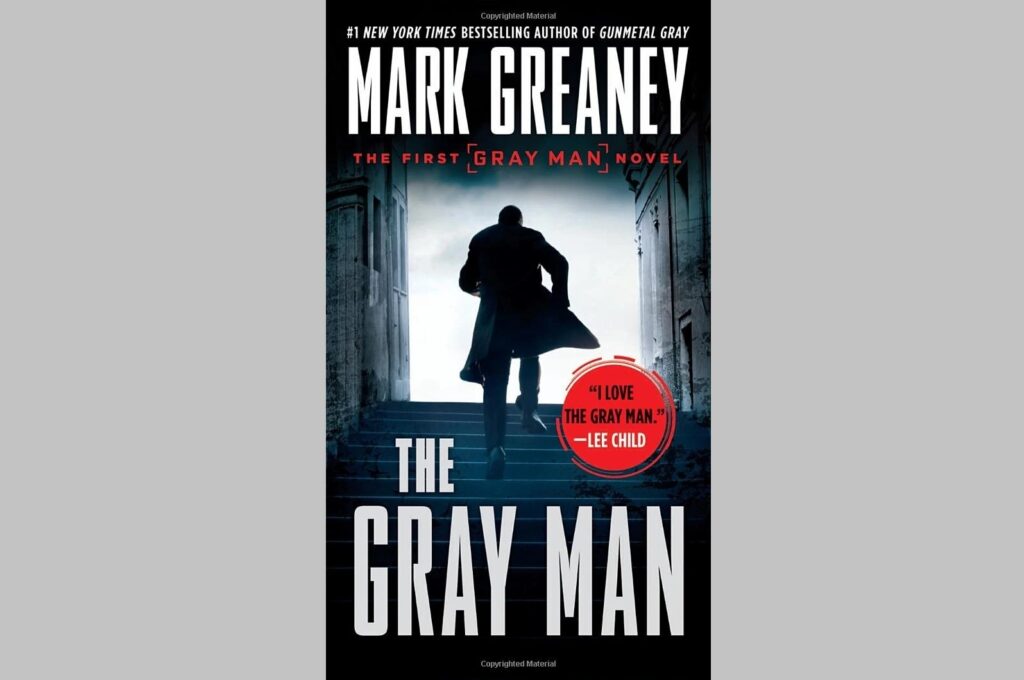
The novel introduces us to Court “The Gray Man” Gentry, a former CIA operative, now a freelance assassin known for his capability to execute his missions without leaving a trace. In this debut novel, Gentry is on a mission in France, but the operation goes sideways when he’s betrayed by his handlers.
As he tries to escape, he learns that there’s a massive manhunt for him, with teams from various global intelligence agencies on his trail. The primary antagonist, Lloyd, an ambitious CIA team leader, wants Gentry taken out to hide past secrets.
As Gentry maneuvers through Europe, he showcases his elite skills, outwitting pursuers, and taking down those who threaten him. As the plot unfolds, Gentry is not just fighting for survival, but also to reclaim his reputation and unearth the conspiracy behind his betrayal.
2. On Target (2010)
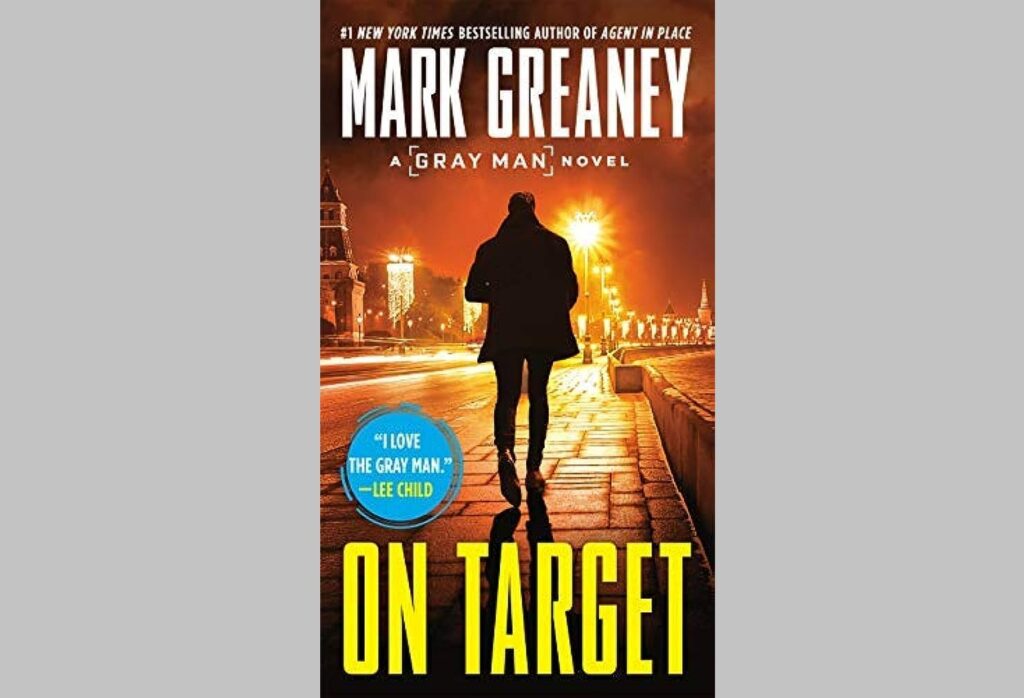
This sequel sees Gentry, also known as “Violator” in some circles, caught between a rock and a hard place. He’s given a seemingly impossible task by the CIA: he must assassinate the president of Sudan, or they’ll kill his handler, Sir Donald Fitzroy.
This mission is especially challenging because the president is heavily guarded and resides in a nearly impenetrable fortress.
Simultaneously, there’s a secondary mission: to rescue a group of girls kidnapped to be sold as slaves. Gentry finds himself torn between these two tasks, battling not just external enemies, but also his own moral compass.
The tension amplifies as readers are introduced to another operative, Zack Hightower, who’s as skilled as Gentry and is assigned to the same mission, setting the stage for a dramatic confrontation.
3. Ballistic (2011)
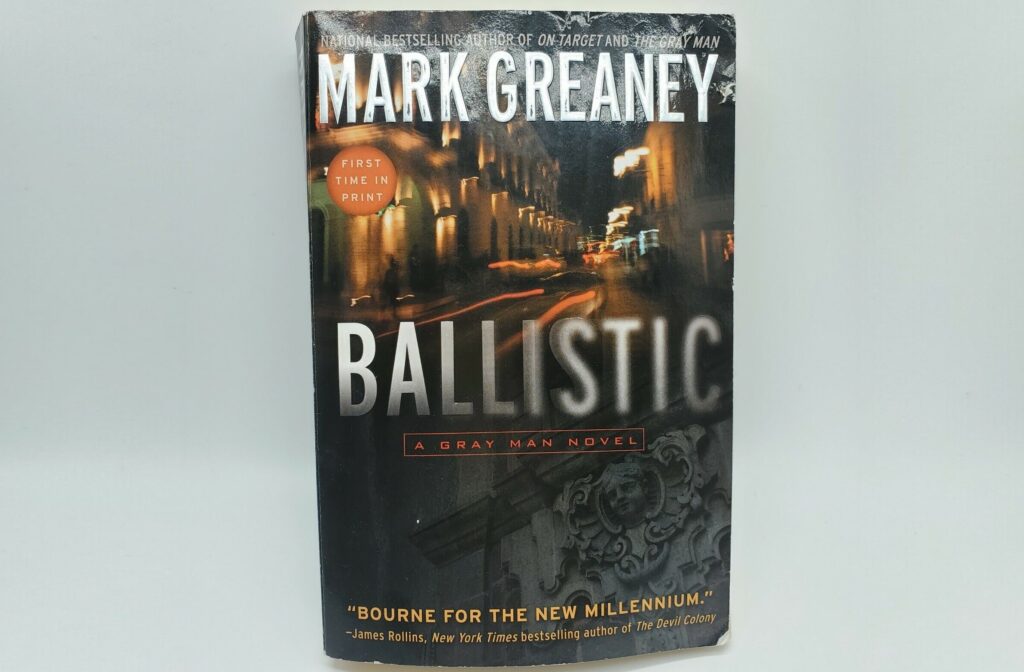
After his harrowing experiences, Gentry decides to lie low and takes refuge in Mexico with an old friend and former CIA colleague. However, his peace is short-lived. When his friend’s family is attacked by a Mexican drug cartel, Gentry takes it upon himself to wage a one-man war against the cartel.
His mission for vengeance takes him deep into enemy territory, where he faces some of the deadliest criminals. As he fights through waves of cartel soldiers, he unravels a deeper conspiracy involving corrupt officials and treacherous allies.
This novel is not just about Gentry’s physical battles but also his struggle to find redemption and a semblance of peace in a world filled with violence.
4. Dead Eye (2013)
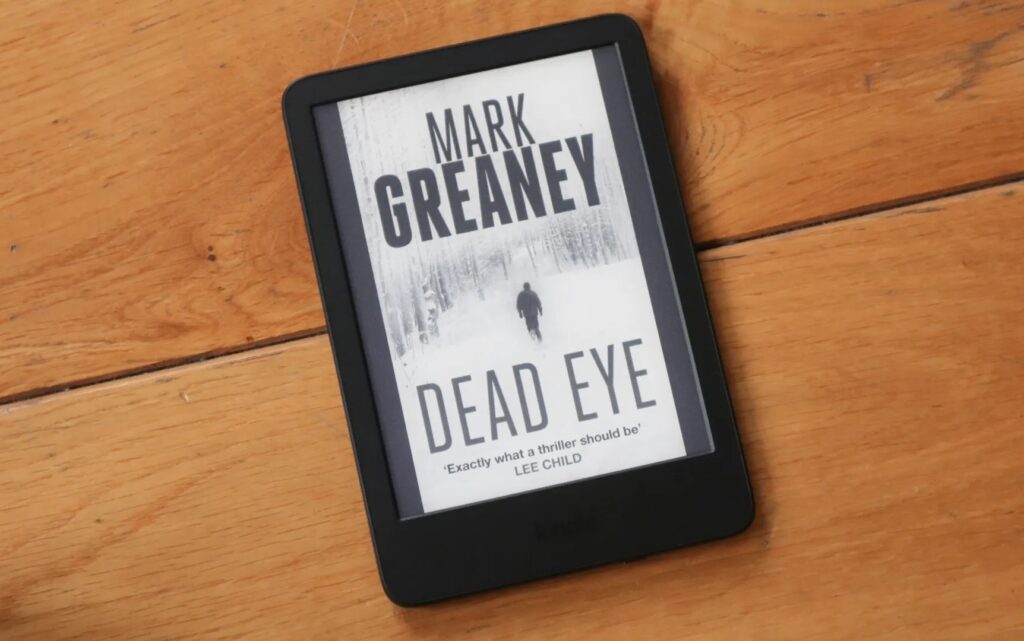
In this installment, the tables are turned on Court Gentry. He’s not the hunter but the hunted, and his pursuer is none other than Russell Whitlock, a former CIA colleague. Known as “Dead Eye,” Whitlock possesses skills almost equal to Gentry’s, making him a formidable opponent.
The twist? Dead Eye can predict Gentry’s moves, having been trained in the same program and by the same mentors.
The story turns intense when it becomes clear that both assassins are being manipulated by a more sinister force. A rogue CIA faction, aiming to recover billions in stolen funds, is pitting the two against each other. Gentry must not only fend off Dead Eye but also unravel the deeper conspiracy at play and identify those pulling the strings from the shadows.
5. Back Blast (2016)
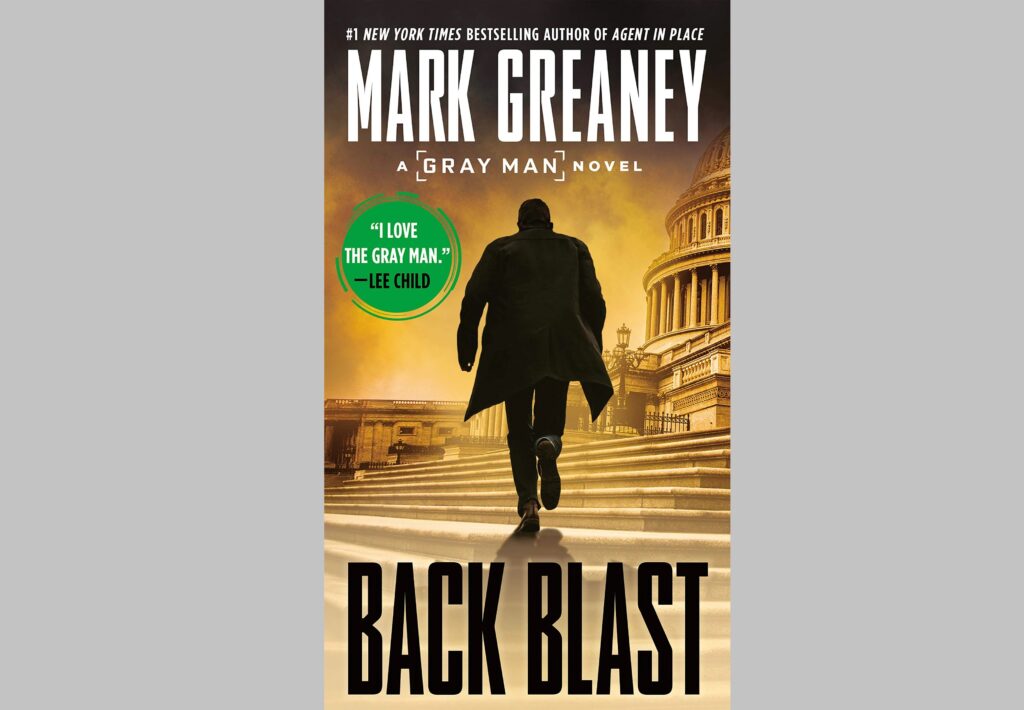
All the previous books allude to a mysterious reason why the CIA wants Gentry dead. In “Back Blast”, those secrets are finally laid bare. Gentry returns to the U.S., specifically to Washington D.C., to uncover the truth behind the agency’s vendetta against him.
His return sets off alarm bells, and he’s immediately the target of a massive manhunt. As Gentry navigates the treacherous waters of D.C.’s political and intelligence elite, he uncovers shocking betrayals and hidden agendas.
The title “Back Blast” refers to the repercussions of a decision made in Gentry’s past, which now threatens not just his life but also national security. In a race against time, Gentry must clear his name and prevent a looming catastrophe.
6. Gunmetal Gray (2017)

After the tumultuous events in D.C., Gentry is back in the field, but this time he’s not alone. He’s working alongside the CIA, albeit uneasily. His mission? Locate Fan Jiang, a Chinese hacker who’s defected and has critical intelligence about China’s espionage capabilities.
However, Gentry isn’t the only one after Jiang.
The Chinese are desperate to get him back, and Russian agents are also on the hunt, aiming to get their hands on the hacker’s knowledge. As the chase extends from Hong Kong to Thailand, Gentry must not only keep Jiang safe but also ensure that the secrets don’t fall into the wrong hands.
7. Agent in Place (2018)
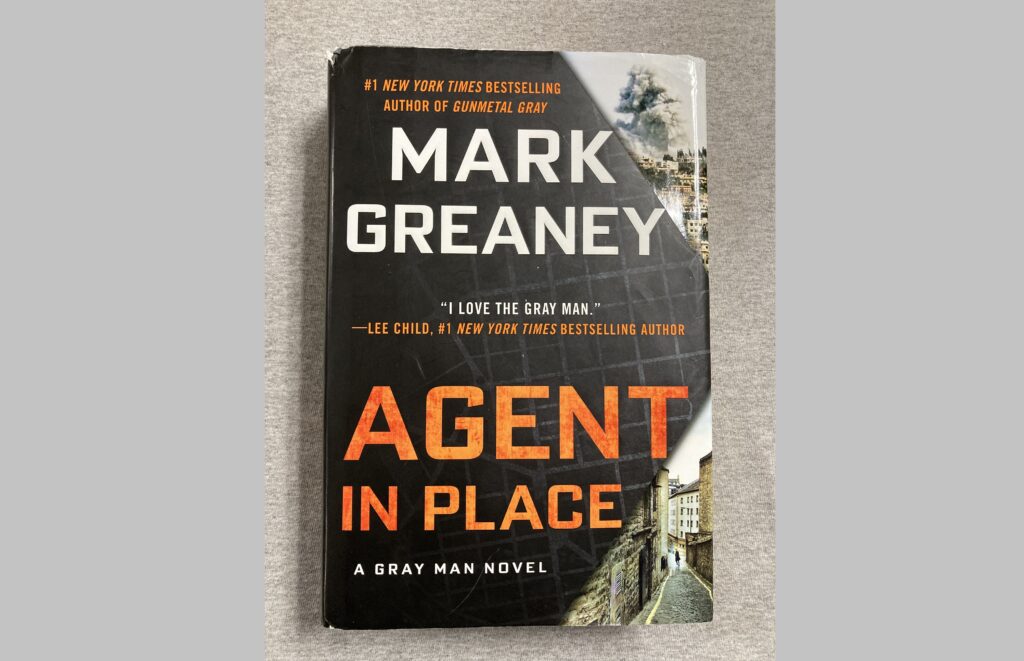
This novel takes Court Gentry, the Gray Man, into the heart of the Syrian Civil War. He is hired by a group of Syrian expats in France to kidnap the mistress of the Syrian president, a task he successfully completes. However, the operation takes an unexpected turn when Gentry realizes the woman’s child is left behind in a hostile war zone.
Driven by personal principles and a moral code, Gentry embarks on a dangerous mission to rescue the child. This tale isn’t just about high-octane action but also delves into the gritty realities of a war-torn region and the human cost of political conflict.
8. Mission Critical (2019)
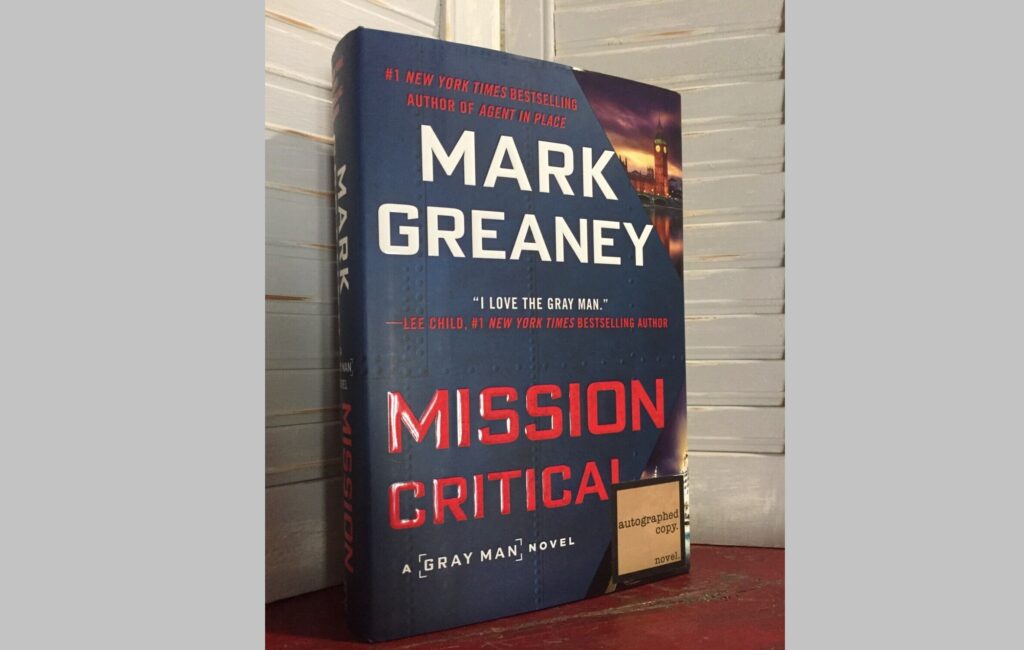
Court Gentry is back working for the CIA’s Special Activities Division, and he finds himself aboard a CIA transport plane when a team brings in a hooded, captured man. Upon landing in England, a coordinated ambush targets the transport, and Gentry has to spring into action.
The plot thickens when it’s revealed that a significant intelligence conference is happening in the U.K. and that a major terror attack is imminent. Gentry, along with Zoya Zakharova, a former Russian spy with her own vendetta, must unravel the conspiracy and thwart the attack. As layers of treachery unfold, Gentry realizes the stakes are higher than he initially thought.
9. One Minute Out (2020)
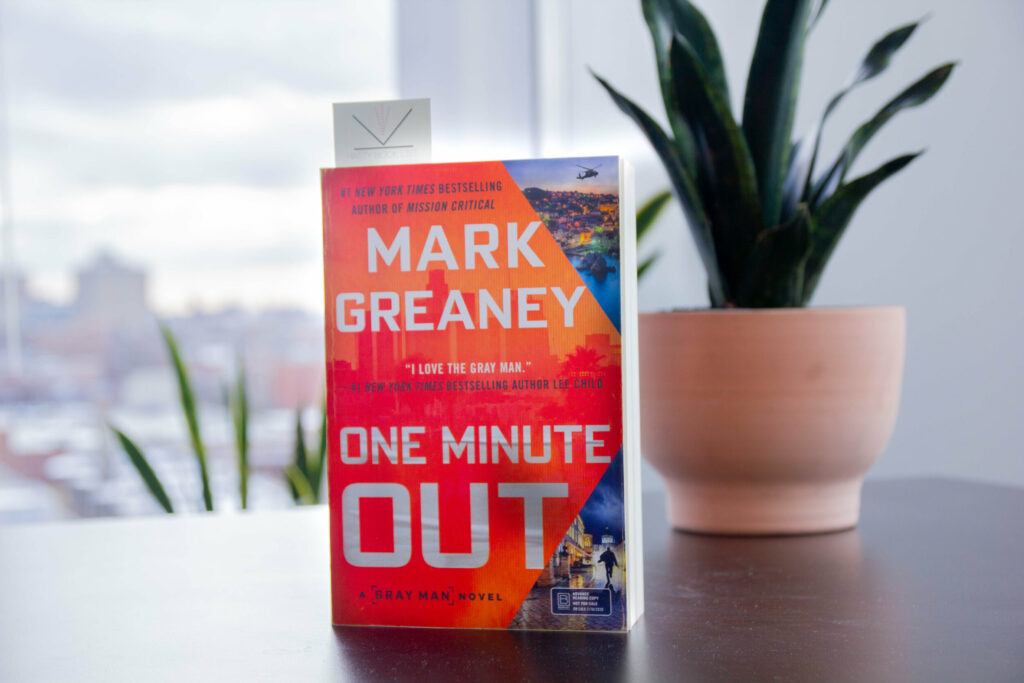
Unlike the previous novels, “One Minute Out” is written in the first person, offering a deeper insight into Gentry’s psyche. While on a mission in Croatia to assassinate a war criminal, Gentry stumbles upon an underground bunker that reveals evidence of a vast human trafficking operation.
This discovery propels him on a personal mission across Europe to dismantle the network. Along the way, Gentry teams up with Talyssa Corbu, a woman with personal reasons to take down the traffickers. As they follow the trail, they find links pointing back to powerful figures in the U.S., and Gentry has to make difficult choices between his duty and his sense of justice.
10. Relentless (2021)
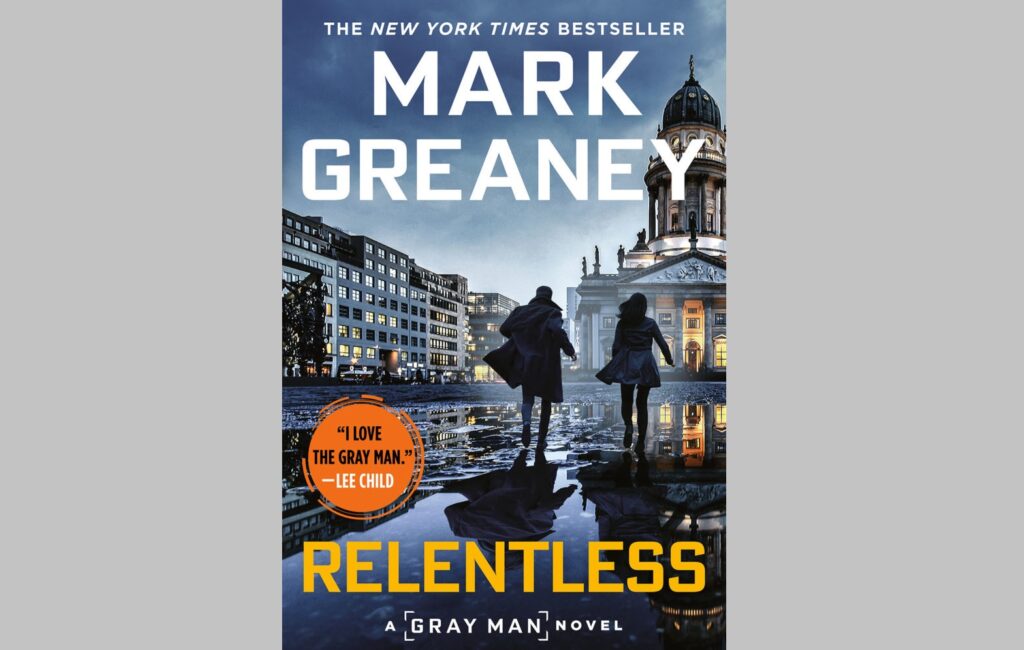
After a mission in Berlin goes awry, Court Gentry is captured and wakes up to find himself in a secret Chinese prison. The Chinese intelligence is determined to extract vital secrets from Gentry, using any means necessary. Meanwhile, the CIA believes he has gone rogue and is compromised, leading them to target their own agent.
While Gentry is dealing with torture and betrayal in captivity, his handler and ally, Zack Hightower, is on a mission to find and rescue him. As Zack battles external forces, Gentry must dig deep to find the willpower to resist his captors and escape. The title “Relentless” aptly describes both Gentry’s indomitable spirit and the non-stop action that unfolds.
Quick Fact: Throughout these novels, Mark Greaney continues to expertly blend geopolitical intrigue with character development, ensuring that readers remain invested in the Gray Man’s adventures and evolution.
In what order should I read the Gray Man series?
If you want to delve into the Gray Man series, it’s best to read the books in the order they were published to fully understand the progression of Court Gentry’s character and the overarching narratives. Here’s the order:
- The Gray Man (2009)
- On Target (2010)
- Ballistic (2011)
- Dead Eye (2013)
- Back Blast (2016)
- Gunmetal Gray (2017)
- Agent in Place (2018)
- Mission Critical (2019)
- One Minute Out (2020)
- Relentless (2021)
- Sierra Six (2022)
- Burner (2023)
Can you read the Gray Man series out of order?
Yes, you can technically read the Gray Man series out of order since each book often presents a standalone mission or conflict. However, there are character developments, backstories, and overarching narratives that progress from one book to the next.
Reading them out of order might cause you to miss references to past events or character relationships, which could lessen the depth of your understanding and enjoyment. For the most comprehensive experience, it’s recommended to read them in order.
Why is The Gray Man so different from the book?
Film adaptations of novels often require changes for several reasons:
- Pacing: Books can provide detailed backstories, internal monologues, and intricate subplots which, while engaging in written form, might slow down the pacing of a movie. Filmmakers often trim or modify elements to ensure the story remains engaging for the duration of the film.
- Length Constraints: A movie typically lasts between 90 minutes to 3 hours, so it’s impossible to include every detail from a novel, especially a detailed one like those in the Gray Man series.
- Visual Storytelling: Movies are visual mediums. Some elements that work well in text might not translate as effectively on screen, necessitating changes.
- Audience Appeal: Filmmakers might adjust certain parts of a story to appeal to a broader audience or to fit the preferences of the target demographic.
- Creative Vision: Directors and screenwriters might have a unique vision or interpretation of the story which leads them to make changes. They might emphasize certain themes, characters, or events over others based on their creative perspective.
How does the depth and complexity of character development in the Gray Man series contribute to its popularity among readers?
The depth and complexity of character development in the Gray Man series is one of its most defining characteristics, playing a pivotal role in its widespread acclaim. At the heart of the series is Court Gentry, a multi-faceted character who, over time, is revealed to be more than just an elite assassin.
He grapples with moral dilemmas, reflects on his past, and constantly evolves, all of which allow readers to deeply connect with him. Unlike some action protagonists who might be portrayed as invincible or one-dimensional, Gentry has vulnerabilities, regrets, and a profound sense of duty.
These intricacies resonate with readers because they portray a character who, despite his unique profession, displays universally relatable emotions and challenges.
Such detailed character exploration not only enhances the intrigue of the overarching plots but also ensures that readers remain invested in Gentry’s personal journey, eager to delve deeper into subsequent books.
How does Mark Greaney manage to balance between detailed military and intelligence operations jargon and keeping the narrative accessible to a general audience?
One of Mark Greaney’s strengths as an author is his adeptness at integrating extensive research on military and intelligence operations into his narrative without alienating readers unfamiliar with the jargon. He achieves this balance through a few strategies.
First, he provides context when introducing a specific term or procedure, he often embeds a brief, natural-sounding explanation within the narrative. This helps readers understand without feeling like they’re receiving a lecture.
Second, Greaney utilizes the perspectives of different characters to provide multiple angles on a situation, ensuring that any technical details are complemented by human reactions and interpretations.
Lastly, while the books are rich in detail, Greaney knows when to prioritize pacing and action, ensuring that the momentum of the story isn’t lost in the intricacies.
What elements of the series make it an ideal candidate for film adaptation, especially by a platform as prominent as Netflix?
The Gray Man series is teeming with elements that make it ripe for film adaptation, particularly for a global platform like Netflix. The action-packed sequences, global settings, espionage intrigue, and a central character with depth offer the cinematic allure of films like James Bond or Jason Bourne.
The international locales, ranging from European cities to war-torn regions, provide visually striking backdrops that can be captivating on screen. Additionally, the series’ blend of high-octane action with intricate geopolitical plots provides both thrilling set pieces and tension-filled moments, catering to a broad spectrum of viewers.
Netflix, with its global reach, would recognize the potential of such a series to appeal to audiences worldwide, given its mix of universal themes and international settings.
Given that the Gray Man series delves into the dark world of espionage, how does Greaney ensure that the narrative doesn’t become overly cynical or bleak?
While the Gray Man series undeniably delves into the darker facets of espionage, politics, and warfare, Greaney masterfully prevents the narrative from becoming overwhelmingly bleak by infusing moments of humanity, morality, and even occasional humor.
Gentry, despite being an assassin, operates on a set of principles, and his internal monologues and dilemmas often provide a moral counterpoint to the ruthless world he navigates. Side characters, too, come with their own sets of values, and their interactions with Gentry often illuminate different facets of human nature.
Greaney also skillfully incorporates moments of levity, often through witty dialogues or unexpected situations, ensuring that the narrative remains balanced.
In the process of translating a novel to a screenplay, what are some challenges filmmakers might face, particularly with a series as layered as The Gray Man?
Adapting a novel, especially one as layered as the Gray Man series, into a screenplay is a monumental task. One challenge is condensing the rich detail of a novel into a film’s runtime. This often means omitting subplots, merging characters, or simplifying certain events.
Another challenge is capturing the internal monologues and emotions of characters, especially in a medium where internal thought isn’t easily portrayed. The nonlinear structure of some novels, where flashbacks or multiple perspectives are used, might also pose challenges in maintaining clarity for viewers.
Furthermore, filmmakers must ensure that the essence and tone of the book are retained, even if certain events are altered for cinematic appeal.
How does the Gray Man series reflect contemporary geopolitical issues, and how might this relevance contribute to its success?
Mark Greaney’s Gray Man series often taps into contemporary geopolitical landscapes, touching on issues like cyber warfare, human trafficking, power dynamics in international relations, and the intricacies of espionage in a digital age.
Quick Fact: By grounding his narrative in real-world contexts, even if fictionalized, Greaney ensures that the events resonate with readers who are familiar with global headlines.
This contemporary relevance elevates the series from being just another action-packed spy thriller to a commentary on modern-day challenges, politics, and the gray areas of morality within global conflicts.
Such relevance undoubtedly enhances its appeal, making readers and viewers feel that they’re not just consuming fiction, but a story rooted in the complexities of the modern world.
How does Mark Greaney’s background and research process influence the authenticity of the series, and how important is this authenticity to the readers?
Greaney’s meticulous research process and commitment to understanding the world of espionage, military operations, and global geopolitics greatly enhance the authenticity of the Gray Man series.
He has reportedly traveled to various international locations to get a firsthand feel for the settings he describes, consulted with experts in the field, and immersed himself in the study of tactics, weapons, and intelligence operations. This dedication to authenticity is palpable in his writing, from the detailed descriptions of locales to the realistic portrayal of operations.
For readers, this authenticity elevates the narrative, making them feel like they’re privy to a world that, while fictional
How do the recurring characters, aside from Court Gentry, add depth and dimension to the series?
The recurring characters play a pivotal role in accentuating the depth and expansiveness of the Gray Man series. While Court Gentry is undoubtedly the central figure, characters like his handler, Sir Donald Fitzroy, and others he encounters, allies or adversaries, add layers to the narrative.
These characters provide varied perspectives, agendas, and motivations that intersect with Gentry’s journey. They add richness to the story, challenging Gentry’s beliefs, aiding or obstructing his missions, and offering readers alternate viewpoints of the espionage world.
Additionally, their evolving relationships with Gentry be it loyalty, rivalry, or something more complex provide a dynamic interplay that keeps readers engaged beyond the primary plot.
How does Mark Greaney handle the portrayal of different global settings and cultures in his novels?
Greaney’s portrayal of global settings is detailed and evocative. His descriptions transport readers to diverse locales, from bustling urban centers to remote landscapes. Beyond the physical settings, Greaney ensures that the cultural nuances, political landscapes, and socio-economic dynamics of these regions are depicted with care.
By doing so, he avoids broad generalizations and provides a textured understanding of the environments Gentry operates. This attention to cultural detail enhances the narrative’s authenticity and makes readers feel grounded in the story’s setting, even as they traverse continents through the pages.
How has the action thriller genre evolved over the years, and where does the Gray Man series fit within this evolution?
The action thriller genre has undergone a significant transformation, moving from Cold War-themed tales to narratives centered around terrorism, cyber warfare, and more personal redemption arcs. Modern thrillers often blend high-octane action with intricate character development. The Gray Man series encapsulates this evolution perfectly.
While providing adrenaline-pumping action sequences, Greaney doesn’t shy away from delving deep into Gentry’s psyche, exploring his moral compass, past traumas, and personal growth. The series, therefore, represents a blend of classic action elements with contemporary character-driven storytelling, positioning itself as a modern touchstone within the genre.
How does the Gray Man series tackle moral ambiguities within the world of espionage?
One of the standout features of the series is its exploration of moral ambiguities. Espionage, inherently, dwells in gray zones, where right and wrong are often muddled. Gentry, as an assassin with a conscience, frequently grapples with these ambiguities.
Greaney doesn’t present espionage as a black-and-white realm; decisions have consequences, and lines between allies and enemies blur. Through various missions and encounters, the narrative delves into themes of loyalty, betrayal, duty versus personal beliefs, and the larger question of ends justifying means.
By doing so, the series prompts readers to reflect on these complexities, making the story resonate beyond the action.
How important is pacing in the Gray Man series, and how does it enhance reader engagement?
Pacing is paramount in the Gray Man series. Given the action-thriller genre, maintaining a balance between fast-paced sequences and slower, introspective moments is crucial. Greaney masterfully modulates the pacing, ensuring that high-tension scenes are interspersed with character reflections or backstory revelations.
This rhythmic alternation keeps readers on their toes, providing adrenaline rushes while also allowing them moments of respite and a deeper connection with the characters. Such pacing ensures sustained reader engagement, making each book a gripping read from start to finish.
What role does technology play in the Gray Man series, especially in the context of modern espionage?
In the modern age, espionage isn’t just about field agents and physical confrontations; technology is a pivotal player. The Gray Man series, being rooted in contemporary times, naturally incorporates technology’s role in intelligence, surveillance, and combat.
Gentry, and other operatives, use advanced tech tools, from sophisticated tracking devices to encrypted communication systems. Greaney also touches upon cyber warfare, digital espionage, and the implications of living in a surveillance-heavy age.
This technological integration makes the narrative timely, reflecting the challenges and tools of modern-day espionage.
What thematic undertones are consistent throughout the series, giving it a unique identity in a sea of action thrillers?
Beyond the action and espionage, the Gray Man series consistently delves into themes of redemption, identity, and the quest for a sense of belonging. Gentry’s journey is not just about completing missions but also about reconciling with his past, understanding his purpose, and seeking a place (literal and metaphorical) where he belongs.
The series also touches on the idea of personal honor in a world rife with deceit. These thematic explorations give the series depth, ensuring it stands out as more than just a sequence of action events, but as a profound character journey set against a backdrop of global intrigue.
Conclusion
The Gray Man series, penned masterfully by Mark Greaney, offers readers a blend of exhilarating action, intricate plotting, and profound character development. Navigating through the shadowy realms of international espionage, the narrative stands out for its authenticity, contemporary relevance, and the moral complexities it presents.
Whether you’re a die-hard action fan or someone who appreciates the nuances of character journeys, the
